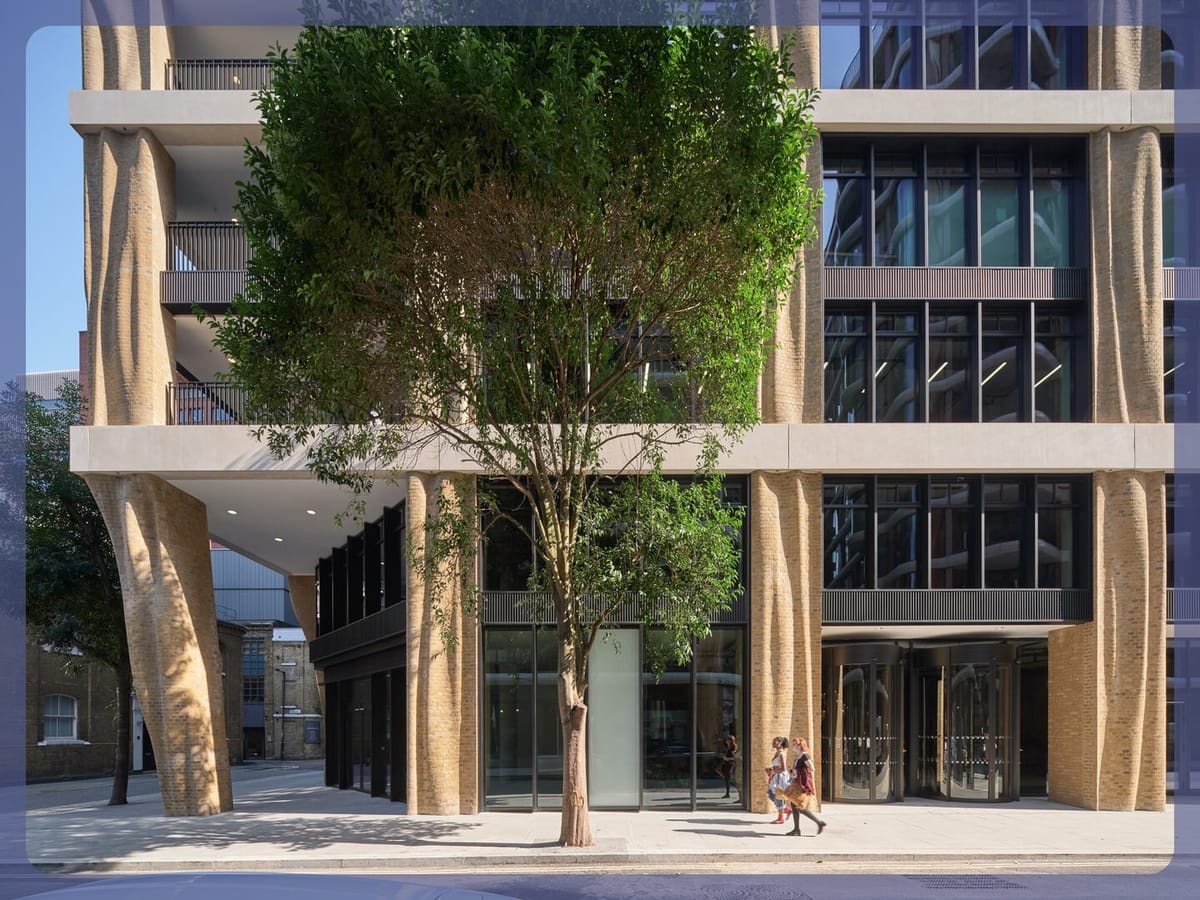What turns a Building into a Story?


This is a clock designed to look like a compass.
It could've just been a clock. Why make it look like a compass? Well, because that choice transformed it from "a clock" into a "compass clock." Meaning, someone took a functional thing and wrapped it in a story.
Now if you spot it at a friend's house and want one for yourself, you walk into the shop and ask specifically for "the compass clock," not "show me any clock."
That's what happens when you turn an object into a story. People ask for it specifically. They seek you out.
An architect who understands this is a storyteller.
They aren't just designing a random building; they're designing a story for the client, and people line up for their ability to give a 'structure' identity and personality. Just the sound of it is exciting, isn't it?
Two ways to tell an Architectural Story
A. Tie the story into the design,
B. Let the story emerge with use
The Tide Bankside building is a good example of the first approach. The architects had a specific idea in mind when they made it.
To understand that idea, let's look at the difference between a wave and a tide.
A wave is just a ridge of water moving across the surface of the sea, like doing pulse crunches.
A tide is the whole sea rising and falling. Whoa. Like doing a V-up.
What turns a building into a story?
A wave is a visual concept. You see it, you're in awe for a second, you forget it.
A tide is a story. You actually have to spend time with it to understand how it works. What's the undercurrent? How does it pull something like this off?
A lot of architectural concepts are just visual concepts, yet we believe we're telling a story. We draw a nice shape, call it a "concept," and move on. But a real story requires depth and tension.
Architectural storytelling isn't just about a pretty visual. It's about sifting through layers of meaning to find something one of a kind.
It would have been far easier to create a simple, wave-like facade and leave it be.
But Squire & Partners chose a story that most of us would probably overlook. Instead of an obvious concept, they chose the quiet yet interesting process of erosion. Yes, Erosion!
They built a system where the slow, continuous force of the river became the design itself. You know, like the most successful stories are the ones that most people overlook? And yet, when they're told beautifully, they stop us in our tracks. They did that.
And yes, not everyone will stop to think about the story. But for those who do, that building becomes a metaphor for life. Each time they pass by, they have something new to ponder.
Good art makes us connect things we wouldn't otherwise. So do buildings that choose to tell a story!
Ready to take on a tide? ;)

"Every building tells a story. The question is: Is it a story worth telling?"
— Daniel Libeskind
